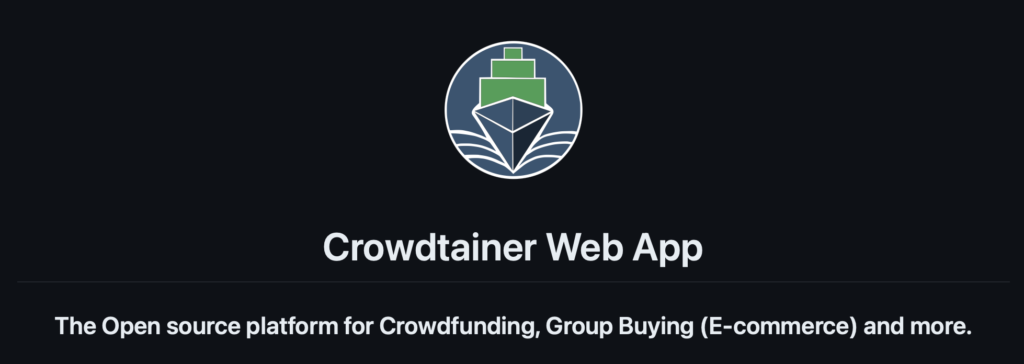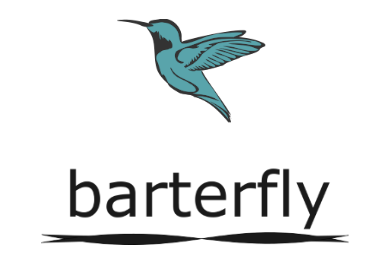
Now that Crowdtainer’s main MVP features are done, it seems like a good time to make the project public, get feedback and think about how to move forward.
Tackling two projects at once has been a great challenge and has caused many delays – that is, running a campaign plus developing the platform to run it on, but at some point the rubber has to meet the road.
It is a good time to recap what Crowdtainer is today, and how it can develop in the future.
Crowdtainer allows you to self-host online campaigns without having to rely on proprietary software, reducing external dependencies as much as possible.
Interestingly, when I was researching self-hosting software, “crowdfunding / group buying” isn’t even an existing category on the popular awesome-selfhosting list. Am I crazy and nobody wants that, or should we create a new category there? 🙂
Example use-cases are (from its github repo):
- Crowdfunding in general, of any size: Fund your app feature development, fund a book, etc.
- Bulk / group orders (E-commerce): Buy collectively to enable new projects and lower costs for everyone.
Advantages:
- Reduces payment and transfer fees to as close to zero as possible by using Layer 2 networks.
- Campaigners are not prone to being randomly censored by a crowdfunding company.
- Privacy oriented: Reducing the number of external dependencies can limit the sharing of sensitive customer data, which also means it is easier and less costly to comply with GDPR laws.
- Easy E-commerce integration for Invoices, accounting, etc: Woocommerce is already integrated, others can be easily added.
Disadvantages:
- users unfamiliar or uncomfortable with cryptocurrency will experience difficulties, although we are currently developing credit card onboarding to address this issue.
- Compared to companies offering similar services with pre-defined terms and conditions, self-hosting a campaign requires the campaigner to define all contractual terms. This can be advantageous in certain cases, but may require upfront capital.
As always, any ‘small project’ can easily turn out to be bigger than expected. In order to run a live campaign, as you see in this live deployment, in reality the following components were actually required:
- Crowdtainer/dapp-contracts: Solidity code responsible to create and define the rules of a campaign, plus tooling to deploy and verify the application on EVM-compatible chains.
- Crowdtainer/dapp-web: Frontend and backend code, written in the beloved SvelteKit framework.
- Within this project, there is a ‘plugins’ folder, which contains optional functionalities to help with law compliance, and allows for future extensions. Currently implemented plugins:
- Notifications: This service helps with the “join project” flow, at the step where the user is “verified” by sending a confirmation code (to check the existence/ownership of their e-mail). This was created for law-compliance.
- WooCommerce: This services helps with the “check out” workflow, by integrating with WordPress’ plugin WooCommerce. This service combines blockchain data along with private data in order to create the E-commerce orders. It triggers the generation of invoices, accounting, and other things required for selling items online without reinventing the wheel.
- Shared among the above plugins, there is a ‘notification‘ module that informs an external monitoring system (healthchecks.io) of any issues (along with issue notifications/alarms).
- Within this project, there is a ‘plugins’ folder, which contains optional functionalities to help with law compliance, and allows for future extensions. Currently implemented plugins:
- Crowdtainer/walletconnect-bridge: Optional – Self-hosted service for connection to external “web 3” mobile wallets via WalletConnectV1 protocol, as an alternative to the injected browser plugin approach.
- Crowdtainer/Wordpress-docker: Docker compose facilitate creation and wiring of all components above.
Oh, and finally, there is the landing page (github), where most likely a more comprehensive documentation/book of the whole project should eventually reside.
And still, the project isn’t where I think it should be. The original vision was for normal, non-crypto users to be able to join a campaign with a common flow, even using a credit-card if preferred, so that people with zero knowledge about crypto can also join.
That leads me to the next milestones I’d like to see:
- In-browser self-custodial crypto wallet – to remove the friction of users needing a separate wallet app.
- Allow joining campaigns using Credit Cards.
- Allowing multiple ERC20 payment tokens instead of one per campaign.
- Improvements to privacy (E2E encryption etc), always following good principles.
All that said, I need to test some assumptions now.
Is using web3 for crowdfunding even a good idea? Could it become what was envisioned? Sometimes it seems so, as progress is ongoing on all fronts.
Or is ‘web3’ is going really to be just about speculation and we are doomed to have the term stolen by big tech and ‘CDBC’s?
This is where you come in: give me feedback, fork the code, and join Barterfly’s compaigns.
Also, subscribe to our newsletter to stay up-to-date.
Until the next one!
